The Assyrian village Qodshanis (Konak)
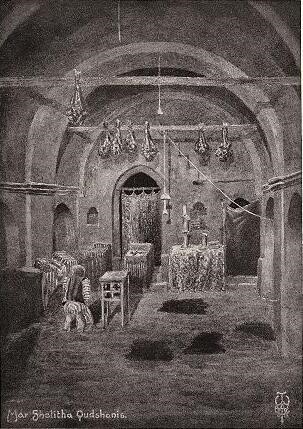
The village was founded in 1672 by Chaldean Catholics from Diyarbekir (Amida), who upon settling here broke off with the Catholic Church and founded a new branch of the Assyrian Church of the East in 1672, ruled by the junior Shimun line. From that point on the village functioned as the de facto capital of a confederation of local Assyrian (East Syriac) tribes, mainly the Tyari (Ṭyārē; also Tiari) and Nochiya tribes, with their own leaders known as Maliks (ܡܠܟ). The tribes paid taxes, which the patriarch forwarded to the Ottomans. The tribal confederation was in effect almost like a vassal state ruled by the Ottoman Empire, and even then the Assyrians were not subservient to the Sultan, but rather to their hereditary Patriarch-Bishop. Hence why upon his declaration of war in 1915 the tribes of the region immediately went into open rebellion against the Sultan.
Remote and isolated, the village was for many years cut off from the outside world up until the year 1829, when a German scholar found it. After that, more visitors from the west began arriving as emissaries. One of them, the English cleric Rev. William Ainger Wigram (1872-1953) and member of the Archbishop of Canterbury’s Assyrian Mission, had lived before the First World War ten years in the region; he described Qodshanis as “the land of the Prester John”.
“The village of Qudshanis (…) has a marvellous situation. It lies on a sloping alp of rugged pasture, between two mountain torrents which spring from the towering snow-fields to the west of it; and which descend in gradually deepening gorges, enclosing the tongue-shaped plateau on which the village stands. They meet beneath the point of the tongue at the base of a lofty wedge of rock; and thence the united stream flows on, joined by others on its way, till it falls into the Zab some two hours below the village. Nestorian tradition regards the Zab as the Pison [or Pishon/Uizhun], one of the four rivers of Paradise; and the Patriarch will occasionally date his official letters from my cell on the River of the Garden of Eden.”
Source: Wigram, W[illiam] A[inger]; Wigram, Edgar T.A.: The Cradle of Mankind: Life in Eastern Kurdistan. 2nd ed. London: Adam & Charles Black, (1922), http://www.aina.org/books/com/com.htm#c26
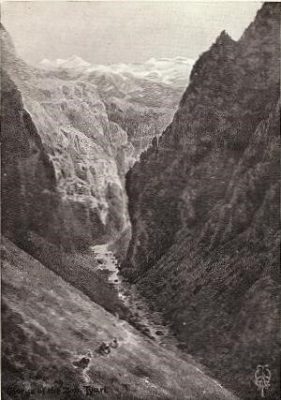
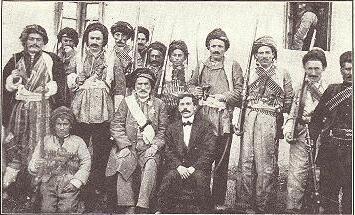
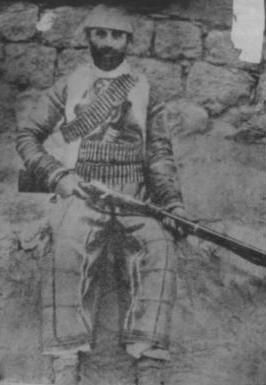
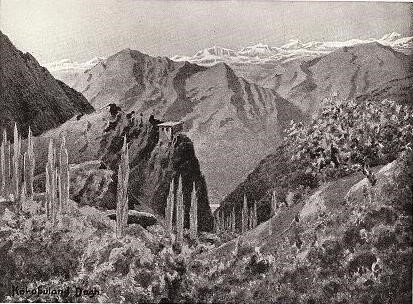
http://www.aina.org/books/com/com.htm#c26
Statement of Paul Shimmon, published in the Armenian journal “Ararat”, of London, November 1915
“(…) The trouble of Mar Shimun’s independent tribes of Tiari, Tkhuma, &c., in Kurdistan, south of Van, began last June [1915]. Mar Shimun’s seat in the village of Quodshanis was attacked by regular troops and Kurds, destroyed and plundered. Most of the people escaped to Salmas. Mar Shimun at the time was in the interior with the main body of his congregation. A regular Turkish force with artillery and some 30,000 Kurds, &c., marched on the Christians. The forty villages of Berwar, those nearest towards Mosul, were destroyed first, and only some seventeen of them are known to have escaped. The women of many of the others have been forced to become Moslems. For forty days the people defended themselves against superior forces, and that only with flintlocks and antiquated rifles. At last, unable to withstand the onslaught of modern artillery, with which the Turks also bombarded the Church of Mar Sawa, the people withdrew to the interior of the mountains with the Patriarch’s family in their center; and here they subsisted on herbs and some sheep they had taken with them, while many were daily dying of starvation. Mar Shimun came to Salmas (…) to effect the escape of his people, or at least of as many of them as could be saved. (…)”
Source: The Treatment of the Armenians in the Ottoman Empire 1915-16; Documents presented to Secretary of State for Foreign Affairs, by Viscount Bryce. London: Sir Joseph Causton and Sons, Ltd., 1916; Reprint Beirut 1979, p. 167